In the Cultural History (or “ico”, short for iconography) stream at Waterloo Architecture, students delve into reading, writing, and thinking about the cultural forces that shape architecture. We page through dense philosophical tomes in the short days between studio deadlines, and brood upon the imagery of countless art films screened in class, cultivating ideas that make their way back into our design work. The Archi-TEXTS series celebrates written student work at Waterloo Architecture. Ongoing submissions are welcome at submit@waterlooarchitecture.com
Laura Di Fiore’s essay and installation “Theatres of Osmosis” were created for ARCH 246: Cultural History III, Foundations of Europe, taught by Val Rynnimeri.
Theatres of Osmosis
by Laura Di Fiore
Installation Excerpt
Medieval works of architecture and art ask one to wander and find himself/herself on a pilgrimage. In contemporary styles, the audience is asked to find a direct path by an implemented route. Both, however, ask one to investigate social ideals through a journey of thought. Focus then is an achievement as is thinking.
Modern art calls one to refresh his/her engagement with life and find new outlooks through abstract colours and representational forms. As with theatre, if the audience wants to acquire new knowledge, he/she will need to see past what is presented in two dimensions into a three-dimensional space.
For Frank Stella, a stimulus for the series, underlying meanings, emotions, and narratives are to be used as a medium in artwork through the combination of lines, planes, volumes, and points within space. This creates an extra dimension for the audience, comparable to theatre and architecture, to leave the observer with a mood of heightened consciousness and elevated thinking.
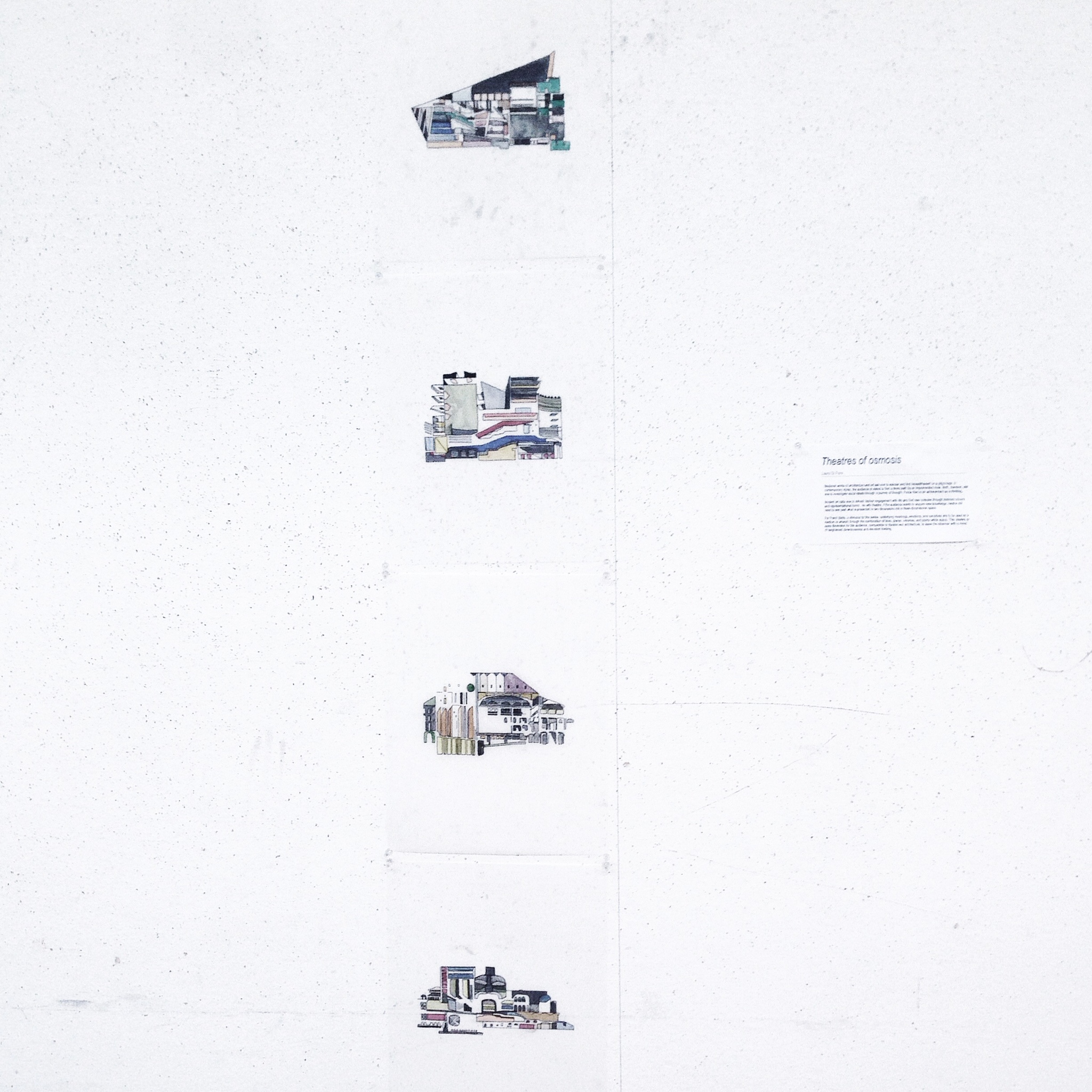
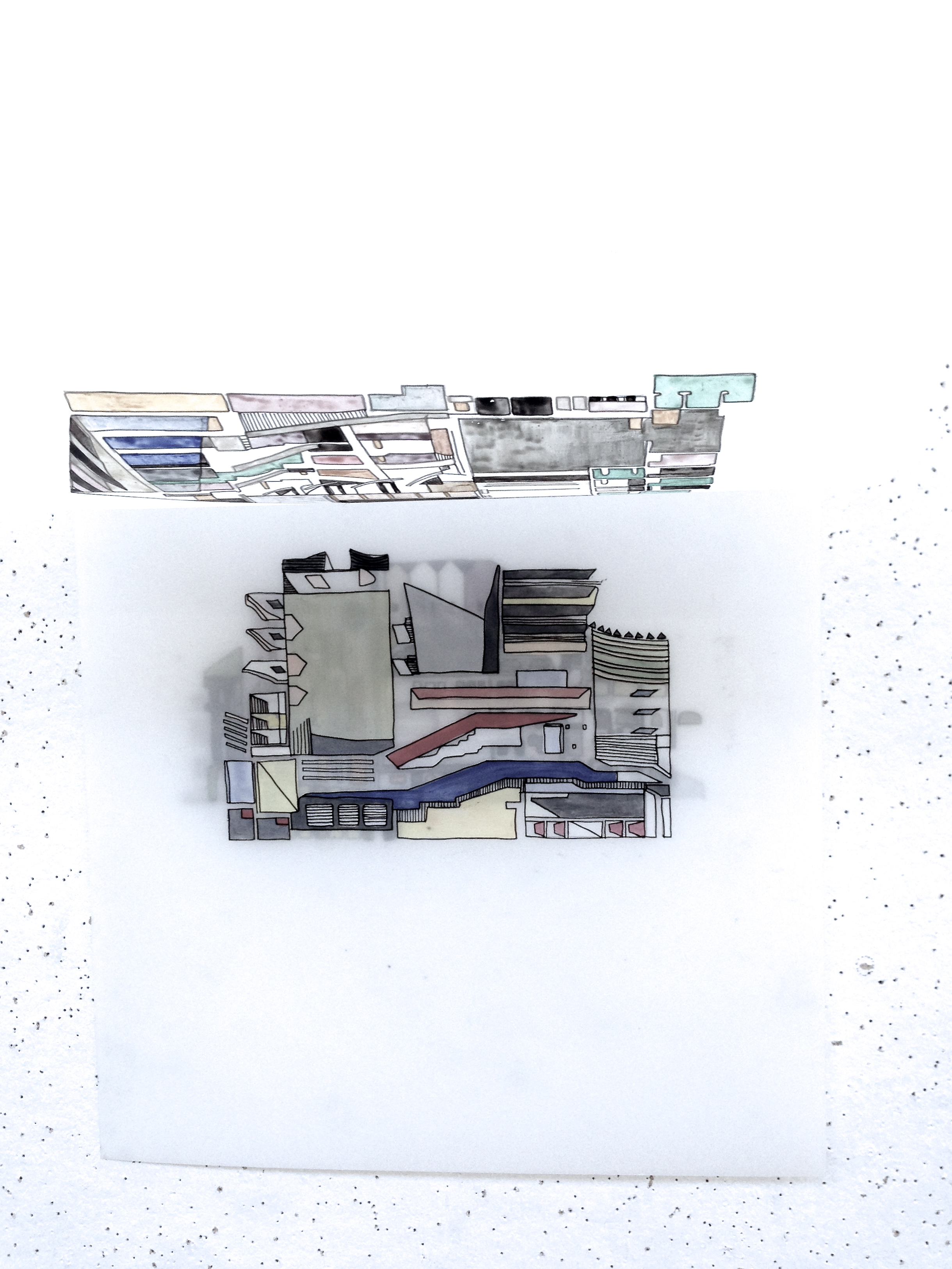
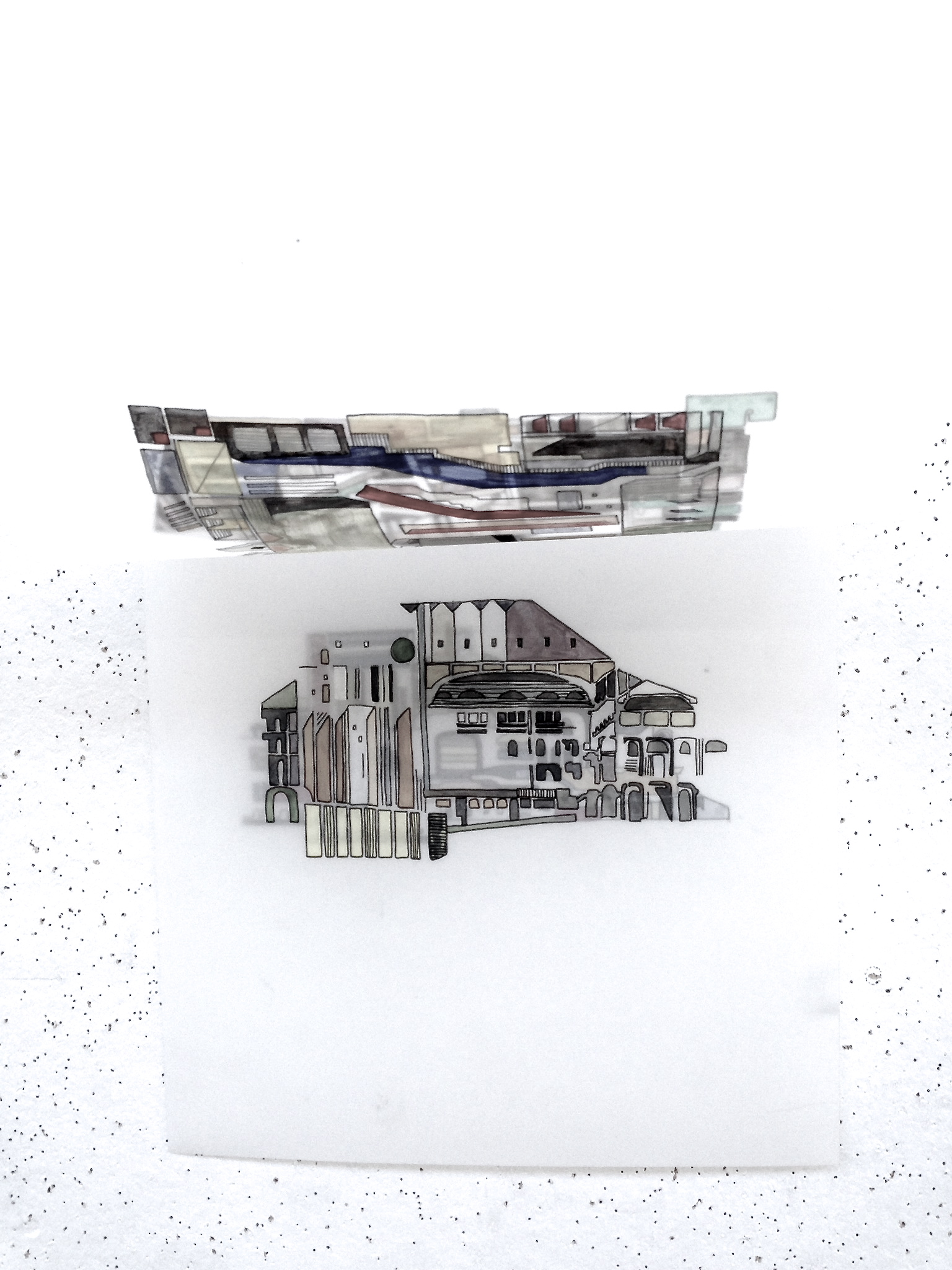
Essay by Laura Di Fiore
Architects acknowledge that theatre is an opportunity to frame social and cultural ideals. The physical structure of a theatre follows the needs of a community at a given time. The stage, performer, and audience are integral parts to theatre as the structure is inseparable from the action that takes place within it. Upon examination of two courtyard theatres, the Gary Comer Youth Center, and The Corral del Principe, it is evident thatthe human condition remains constant in its need for a place of social gathering. In effect, contemporary architecture learns from medieval styles and is able to build upon the accomplishments of the form that has preceded it(Mullin, 156). A location, with a specific use such as a theatre, can generate similar memories regardless of time. One’s memory is able to serve as a network of experiences through these selected sites through the act of acquiring knowledge. This knowledge, provided by the theatre, relies on the audience to presence themselves, which formulates a cultural osmosis. Thus,an assimilation of cultural ideas exists between these buildings based on their analogous building types, location within a public realm, and space for meditation.
Elements of a theatre design require proper staging and an appreciation of productions mounted within the space. Both spaces are a proscenium theatre configuration to strengthen the relationship between the performance on stage and the audience’s perception. The theatre space is a central point of activity in each example of organized pieces of architecture. The otherwise private programming and circulation is modeled around this larger, open space. For instance, the Corral del Principe has upper galleries and raked central seating framing its large stage. The Principe uses its full width to house the stage, which sits 9 feet above its audience seating. This gives prominent emphasis to the cultural act, which is taking place (Allen, 3). Medieval performances featured at the Corral del Principe borrow aspects of liturgy, which are based on audience participation. This is an example of a configuration that follows a mass structure where the celebrant and minister can be related to the audience and performer (Young, 80). In the ecclesiastical tradition, the success of a minister’s ability to communicate a message or idea is based on the willingness of the audience to be transformed by his ‘dramatic performance’. Theatre learns from this by communicating actions in a dramatic expression to disseminate knowledge. In effect, medieval theatre teaches the audience about religion, rituals, and important social figures. However, within the audience, there are levels of social stratification. The balconies in Corral del Principe are separated for both men and women, and the distance from the stage to designated seating is in proportion to one’s social status. Therefore, a contemporary example is able to succeed this configuration as the Gary Comer Youth Center has flexible seating arrangement devoid of class differences. It is also a transformable space in its ability to house various cultural events, which attract different user groups with dance performances, drill-team training, plays, and lectures utilizing a retractable screen. There is a further level of engagement as the youth in the community may choose to actively participate as performers, or part of the audience, thus, creating their own cultural acts and expanding their creative horizons. Hence, each theatrical style developed through the centuries presupposes a distinct production pattern. This challenges the architect to think beyond building architecture, which is perceived, to designing a space that is remembered. The space perceived is a locational structure, which is a prerequisite for inventive thinking (Carruthers, 12). In contrast, the space remembered by the community holds the thought-generating performances that resemble social, cultural, and historical lessons.
Theatre is a communicating zone that operates between public spheres as a space of discourse and belonging. It has a physical space but also a non-physical place located within a network of memories (Carruthers, 54). The temporal depth of both sites enables one to acquire the meaning of every day events through lessons learned within the theatre. Architects locate theatres to best frame public life in both exterior and interior contexts. These qualities make theatres a landmark in the public sphere and an artifact of the human condition. The sites being investigated are in residential areas, short distances from their respective city centers. For more than a century and a half, the Corral del Principe remained one of the only two public theatres in Madrid (Allen, 3). It became a project of charitable brotherhood, enclosed by social housing, while engaging its surrounding community. In medieval thought and culture, theatrics has a desire to order knowledge and strengthen remembering, influencing the communities behavior and identity (Carruthers, 222). This part of public worship has its origins employed in the medieval church, translated through performance. Memories of performances are tied to the location in which they occur, regardless of time. In turn, the Gary Comer Youth Center learns from its medieval predecessor and provides a space for reflexive circulation of discourse, which has its own temporality. The Center strengthens the communal setting by providing an after hours place for youth in the south side of Chicago, adjacent to the Gary Comer College Prep School. The interiors of both theatres are harmonious with their exteriors by utilizing similar visual effects of light, shade, protection, and auditory quality. The extension of the public realm exists through the windows and the ability to see and expose views, which activate the agency of the building. The void in the interior created by the courtyard is a space of interaction and collaboration of public programs coming together. Architectural image, then, is translated in theatre by the uniqueness of being in a particular location in the public realm, and it also has the ability to host an event that distinguishes itself everyday life occurrences.
Theatres also provide an outlet for intellectual meditation by providing mental images or cognitive pictures for an audience to reflect upon. A time for reflection and self-meditation is an intellectual strategy prevalent in medieval and contemporary culture (Carruthers, 3). Theatres use performance as a fictive device for the mind to utilize and remember information. Memories are curated in a particular way to articulate cultural needs. The Corral del Principe was able to explain religion through performance. As a cultural center, it served not only as a location for the performing art, but it was also the site where the community gathered to pray together and strengthen its understanding of faith. In contemporary contexts, the practice of meditation or religion is not only accepted but also diverse. In essence, the Gary Comer Youth Center theatre serves as a more abstract form of meditation. It is a site where one can take a break from the daily routine and engage in various activities by offering a creative outlet for the youth. However, both the Gary Comer Youth Center and the Corral del Principe use performance as mediation through a creative thinking process. This art, ‘mneme,’ is a function of memory and is essential for purposes of cognition (Carruthers, 15). A theatrical performance calls upon the audience to take in the actions and acquire new insight on what is being presented. This practice is the foundation for modern art, which depends directly on the audience’s perception and interpretation after careful examination of the work. For example, in the theatrical approach to art created by Frank Stella, two-dimensional works of art have a quality of being inside a three-dimensional space. In his work, he emphasizes the flatness of a canvas painting to give the notion of a window into a greater space that has underlying emotions and narratives. Hehighlights this experimentation as an attempt to make art at the scale of architecture and asks the audience to engage themselves with the piece to gain new insights on what is being presented. Art is also able to serve as a culmination of thought and recollection. Like a still performance, insight and knowledge on historical events is presented in new forms. These images are then stored in the audience’s mind as reference for future implications. Accordingly, these new images have a temporal quality that the mind is able to create for itself.
In essence, theatre has the capacity to bear knowledge because of its ability to locate social and mental inventories, which respond to a cultural condition. Since their building forms are common to each other and are in fact common places, memory work is also fully social (Carruthers, 13). The theatre is evocatively spatial; yet, its main purpose is disseminated through narratives that are essential to the art of memory for a community. A theatre’s success is based upon its ability to combine verbal language, action, and architecture in order to propose these memories. That is to say, a performance asks the audience to be dialectical and draw layered relationships between temporal and circumstantial conditions of a time period. Thus, an audience is able to witness itself in space and develop its own theatrical public. Accordingly, these principles, carried through medieval culture, are embedded in contemporary practices and have incorporated their discussions into modern approaches to art and architecture.
The Archi-TEXTS series celebrates written student work at Waterloo Architecture. Ongoing submissions are welcome at submit@waterlooarchitecture.com


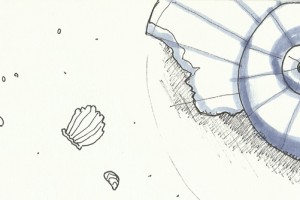
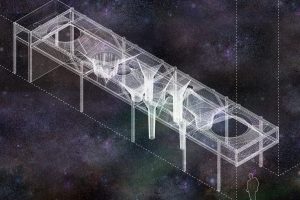
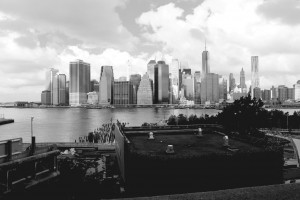
Leave a Reply